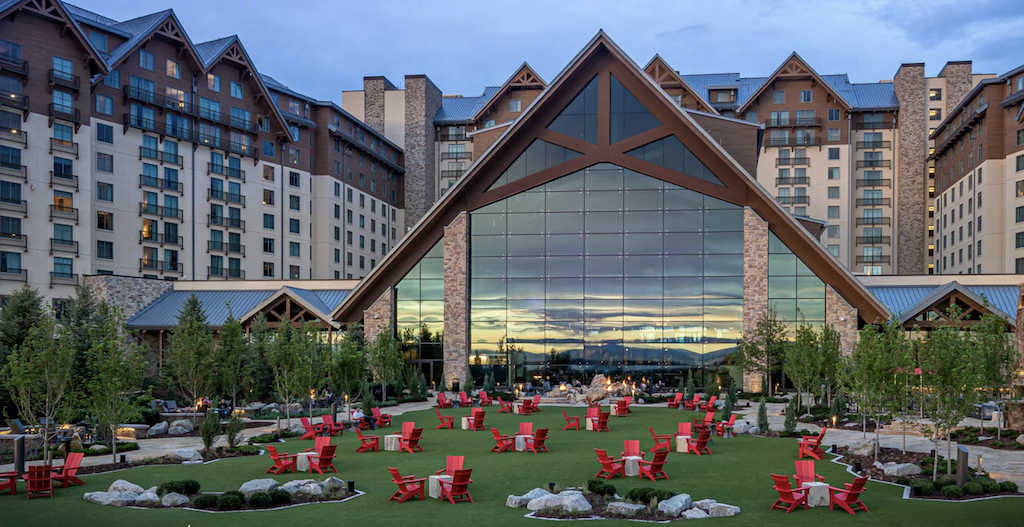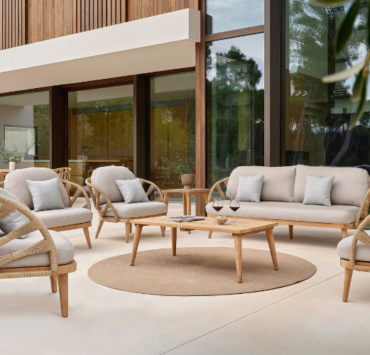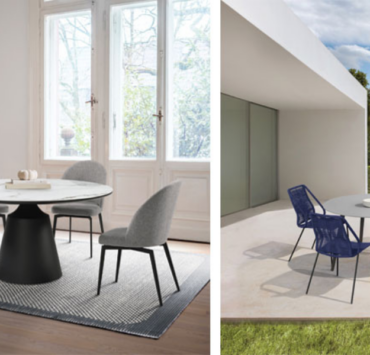Gil Walsh says that she began adding outdoor design more than 25 years ago when she started her interior design firm, because location, as they say, matters.
“Having a home in Jupiter (Florida) as well as Pittsburgh made outdoor entertaining and living a must,” she says. “And then when the pandemic started, even more clients desired outdoor spaces for dining, entertaining and working.”
Walsh, whose design studio is in West Palm Beach, Florida, says that outdoor design offers the singular opportunity to create environments that both harmonize with nature and enhance the client’s lifestyle.

“I love the freedom to design with organic elements like sunlight, wind and natural landscapes,” she says. “It allows me to blur the lines between indoor and outdoor living, creating functional, beautiful spaces that encourage relaxation, socializing and dining alfresco. Cooking and dining outside creates a relaxed and enjoyable atmosphere.”
With that freedom can come challenges: most importantly, the weather.
“Materials need to be durable and withstand elements like sun, rain and temperature changes, without sacrificing style,” Walsh says. “Additionally, space constraints, zoning laws and environmental factors like drainage, soil quality and the need for shade can complicate design. Lighting is another challenge, as outdoor lighting needs to provide both aesthetic appeal and functionality without overpowering the space.”
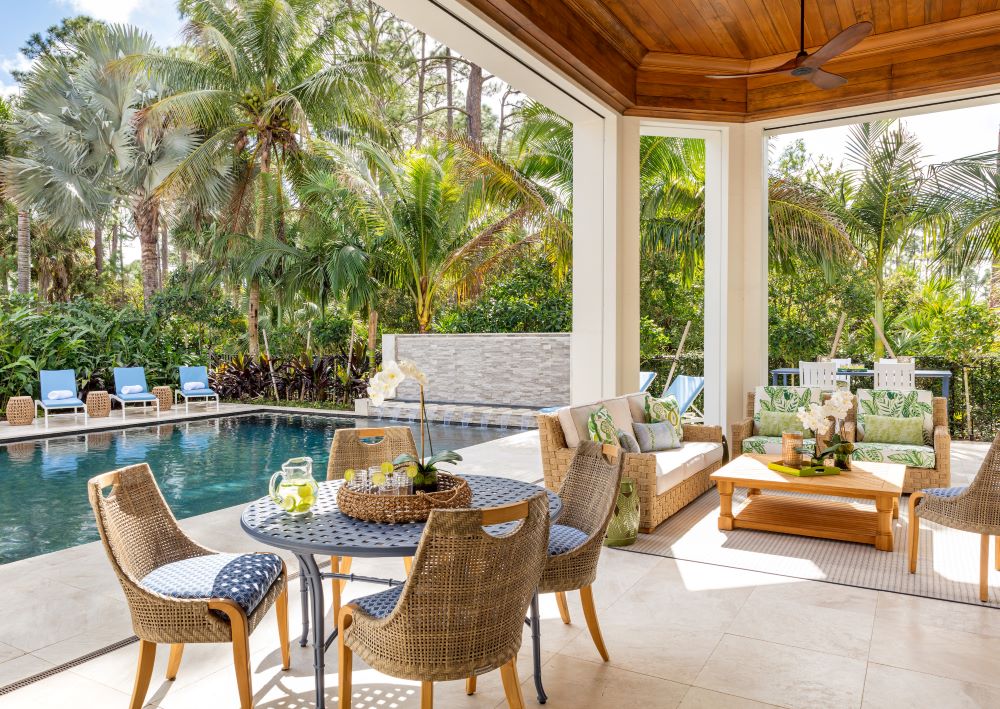
Even so, she says there has been a noticeable increase in outdoor design projects, especially since the pandemic.
“People now place greater value on outdoor spaces as an extension of their homes, viewing them as places for relaxation, entertaining or even working from home,” says Walsh. “There is a growing demand for comfortable, aesthetically pleasing outdoor environments that allow for all-season use, especially as clients seek to maximize their property’s livable space.”
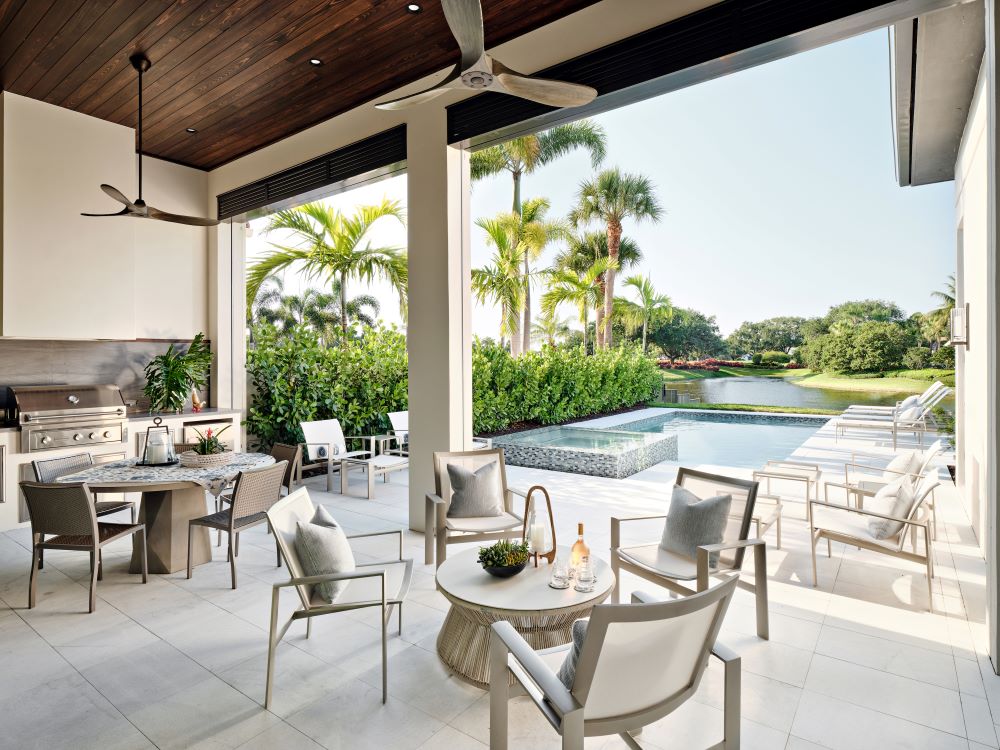
To get to a good outcome, clear communication between designers and manufacturers is key.
“As a designer, I rely on manufacturers to provide accurate product information, availability and lead times so I can plan effectively,” says Walsh. “It’s also crucial that manufacturers stay innovative, offering high-quality, durable and stylish materials or furnishings. A strong relationship helps ensure that the client’s vision is achieved without surprises or delays.”
She says that outdoor manufacturers help the process by offering products specifically designed to withstand outdoor conditions, such as weatherproof furniture, UV-resistant fabrics and composite decking.
“They often provide technical specifications, care instructions and installation advice, which helps streamline the design process,” says Walsh. “Some manufacturers also offer customization options, allowing designers to tailor products to fit the specific needs of a project.”
Still, there’s room for improvement.
“With clients becoming more environmentally conscious, it’s important that manufacturers develop materials that are both durable and sustainable,” says Walsh. “More transparency regarding product life cycles, environmental impact and ethical sourcing would also be appreciated.
“Additionally, providing better access to sample materials or more detailed product catalogs could help designers make informed decisions.”
She says that the best designers learn what’s available through trade shows, manufacturer reps, industry events and product catalogs.
“Networking with other designers or professionals in the industry can also be a great way to discover new materials,” says Walsh. “Online platforms, social media and design blogs are increasingly important sources of inspiration and information. Continuing education and training workshops provided by manufacturers or industry organizations also help designers stay up-to-date on trends and product innovations.”
Any advice for younger designers just starting to design outdoor spaces? “First, study the environment you’re designing in — understanding how weather, sun patterns and the landscape interact with your design is essential,” says Walsh. “Always prioritize functionality, as outdoor spaces need to work in a variety of conditions. Also, be mindful of durability — outdoor materials must stand up to the elements, so invest time in researching the best options.
“Lastly, don’t be afraid to experiment! Outdoor spaces offer the chance to think creatively about layout and design, allowing you to push the boundaries of traditional interior design. By combining creativity with a practical understanding of outdoor living needs, young designers can excel in crafting beautiful and functional exterior spaces.”



